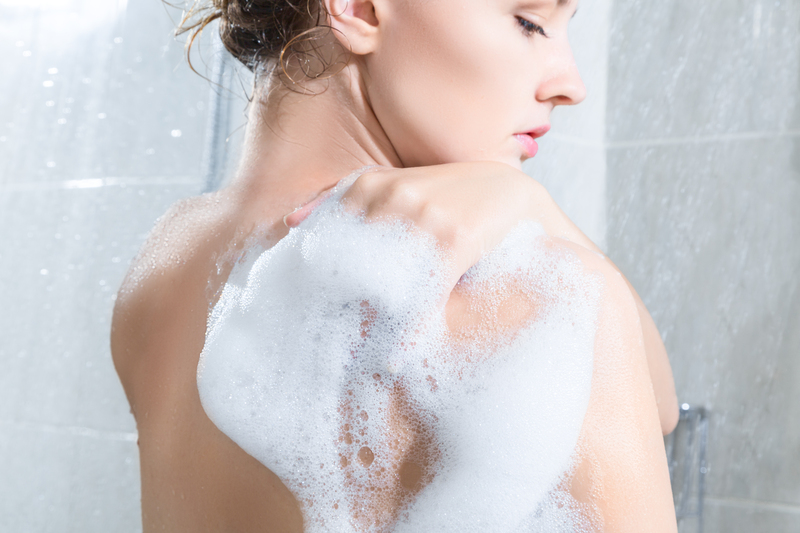Simple Steps to Banish Burnt-on Residue from Your Stovetop
Posted on 02/07/2025
Simple Steps to Banish Burnt-on Residue from Your Stovetop
A sparkling, clean stovetop is the cornerstone of any inviting kitchen. But let's face it--no matter how careful a home chef you are, spills and splatters are inevitable. And when these stubborn messes are left unattended, they often become tough, burnt-on residue that seems almost impossible to remove. Don't worry--restoring your stovetop's pristine shine is totally achievable with the right approach! In this comprehensive guide, you'll discover foolproof, simple steps for eliminating burnt-on stains and grease, leaving your stovetop spotless and gleaming.
Why Addressing Burnt-On Stovetop Residue Is Important
It's tempting to postpone cleaning when you're tired after preparing a delicious meal, but burnt-on residue is more than just unsightly. Ignoring caked-on food bits and grease can:
- Cause lingering food odors in your kitchen
- Harbor bacteria and germs that contaminate new dishes
- Reduce appliance efficiency, especially on gas burners
- Lead to discoloration or permanent damage to the stovetop's surface
By removing burnt-on stovetop stains promptly, you preserve your stove's appearance, keep cooking areas hygienic, and ensure your appliance runs smoothly for years.

Understanding Your Stovetop: Know Before You Clean
Not all stovetops are created equal. Different materials require different approaches for banishing tough, burnt-on residue. The most common stovetop types are:
- Gas stovetops: Usually consist of removable grates and burners
- Electric coil stoves: Feature removable coils set onto a metal tray
- Glass or ceramic stovetops: Sleek surfaces that demand gentle care
Always check your manufacturer's manual before starting--using the wrong cleaning method on a delicate glass top, for example, can cause scratches. Adapt these simple stovetop cleaning steps to suit the material you're working with for best results.
What Causes Burnt-On Residue and Why Is It So Stubborn?
Spills and splashes left to dry form burnt-on gunk that adheres to the stovetop surface. As heat is repeatedly applied during cooking, sugars caramelize, proteins harden, and oils polymerize--turning soft, fresh spills into hardened, crusty layers that resist basic wiping. These stubborn stains require a mix of heat, moisture, and abrasion to lift.
Essential Supplies for Tackling Burnt-On Stovetop Stains
Gather the following supplies before you embark on your quest for a spotless stove:
- Baking soda (sodium bicarbonate): A gentle abrasive and deodorizer
- White vinegar: Natural degreaser and stain remover
- Lemon juice: Cuts through grease and leaves a fresh scent
- Dish soap: Breaks down stubborn fats and residue
- Non-scratch scrubbing pads or sponges
- Plastic or silicone spatula: To lift stuck-on food without damaging surfaces
- Microfiber cloths: For streak-free wiping
- Spray bottle: For easy application of cleaning solutions
- Old toothbrush: Reaches into burner crevices
- Gloves: To protect your hands from harsh grime
Simple Step-by-Step Method to Remove Burnt Residue from Your Stovetop
Step 1: Safety First--Turn Off and Cool Down
Before you get started, ensure the stovetop is completely off and cool to the touch. For gas burners, also disconnect or turn off the gas supply if you plan on deep cleaning the burners themselves. This precaution protects both you and your appliance.
Step 2: Remove Grates, Burners, and Knobs
Take off all removable pieces such as grates, burner covers, and knobs. Soak these parts in hot, soapy water while you clean the main stove surface. This pre-soak loosens grime, making later scrubbing much easier.
Step 3: Sweep Away Loose Debris
Wipe or brush away food crumbs and loose debris with a dry paper towel or soft cloth. This ensures you're not just spreading grit around when you move on to scrubbing.
Step 4: Apply a Soothing Baking Soda Paste
Mix three parts baking soda to one part water until you create a thick, spreadable paste. Generously cover the burnt-on residue on your stovetop with this paste, gently rubbing it in with your fingertips or a soft cloth. Allow it to sit for at least 15 minutes--the longer, the better for ultra-stubborn spots. Baking soda's mild abrasiveness helps dislodge crusty stains without scratching most surfaces (including glass or ceramic, just don't rub harshly!).
Step 5: Loosen and Lift with Vinegar or Lemon
Fill a spray bottle with equal parts white vinegar and water (or substitute lemon juice for a fresh scent). Mist over the baking soda layer-- watch as it fizzes and breaks down residue! Let this sit and work its magic for another 10-15 minutes.
Step 6: Gentle Scrubbing
With your non-scratch scrubbing pad or sponge, gently scrub the residue in a circular motion. For glass or ceramic stovetops, use only gentle pressure--never use steel wool or harsh scouring pads. If bits remain stuck, a plastic spatula can help carefully lift them away. For tight crevices near burners, dip an old toothbrush in the baking soda paste and scrub.
Step 7: Rinse and Wipe Down
Wipe the entire surface clean with a microfiber cloth dampened with warm water. Repeat as necessary to remove all traces of baking soda and loosened grime.
Step 8: Deep Clean Removable Parts
Scrub soaked grates, burners, and knobs with a brush or sponge. For extra-tough stains, sprinkle additional baking soda on these parts and add a dash of vinegar, letting it fizz before scrubbing. Rinse and dry thoroughly before reassembling your stovetop.
Step 9: Finishing Touches
Spray down the surface with a solution of water and a drop of dish soap, then buff with a dry microfiber cloth for a gleaming, streak-free finish. Replace all removable parts once they're clean and dry.
Special Tips for Different Stovetop Surfaces
Glass or Ceramic Stovetops
- Always avoid metal or highly abrasive scrubbers.
- Use a special glass stovetop scraper (found at most hardware stores) to gently lift the most stubborn burnt-on food.
- Lemon juice and vinegar are especially helpful for breaking down mineral deposits or water spots.
Gas Stove Burners
- Clean burner ports with a toothpick or paperclip to prevent clogging and uneven flames.
- Dry burners completely before reassembling to avoid gas flow issues.
Electric Coils and Trays
- Unplug coils before cleaning for safety.
- Avoid submerging coils--instead, wipe with a damp cloth.
- Soak drip pans in hot, soapy water and scrub with baking soda for best results.
Homemade Solutions for Removing Stubborn Burnt-On Messes
Not a fan of commercial cleaning chemicals? Natural stovetop cleaning solutions can be just as effective:
- Baking soda and hydrogen peroxide: Mix into a paste for tough, set-in stains.
- Salt and lemon: Sprinkle salt on the residue, scrub with half a lemon for an abrasive, citrus-powered cleaner.
- Vinegar and cornstarch: Heat 1/4 cup vinegar, add a tablespoon of cornstarch, stir until thick, and apply to burns (good for glass tops).
These DIY methods are environmentally friendly, non-toxic, and often more cost-effective than store-bought cleaners.
Preventing Burnt-On Residue--Your Future Self Will Thank You!
While learning to remove burnt-on residue from your stovetop is crucial, prevention is even better. Keep your stove shining longer with these simple habits:
- Wipe up spills immediately after cooking--while the stove is still warm (but not hot), messes will lift more easily.
- Deep clean weekly to prevent buildup.
- Use burner liners or drip pans (where possible) to collect spills and simplify cleanup.
- Avoid overfilling pots and pans to minimize bubbling over.
- Regularly check burner ports and gas flow for blockages.
- Always let the stovetop cool before deep cleaning to avoid injury.

Frequently Asked Questions: Banishing Stovetop Burnt-On Gunk
What if the burnt-on residue just won't budge?
For exceptionally stubborn stains, repeat the baking soda/vinegar treatment several times, allowing longer soaking periods. Very thick buildup may require gentle use of a specialized scraper or, as a last resort, a paste of commercial ceramic cooktop cleaner.
Is it okay to use a razor blade on glass stovetops?
Only use razor blades designed specifically for glass cooktops. Hold at a very shallow angle, never press hard, and always use on a wet surface.
Can I use oven cleaner on my stovetop?
How often should I deep clean my stove?
Aim for a quick wipe down after each use and a thorough cleaning at least weekly. High-use kitchens may require more frequent attention.
Restore Your Stovetop's Sparkle--It's Easier Than You Think!
Burnt-on stovetop residue can be a kitchen frustration, but with the outlined simple cleaning steps and a little elbow grease, you'll bring back that like-new shine in no time. Remember: regular upkeep, immediate spill cleanup, and using the right cleaning supplies tailored to your stovetop material are the real secrets to effortless maintenance. Happy cooking--and even happier cleaning!
Want more tips for a spotless kitchen? Bookmark this guide to stovetop cleaning and check back often for more effective home care insights!





